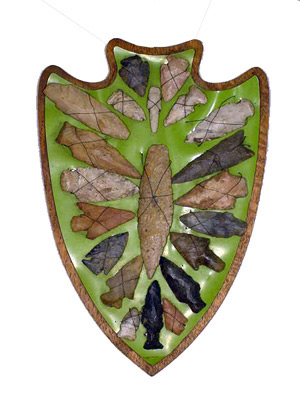
HELENA-WEST HELENA, Ark. (AP) – Those who know Joe Madonia are familiar with his passion for – and knowledge about – ancient things like fossils, Indian and Civil War artifacts and antique bottles.
But his ability to draw details from his memory recently put him in front of the Helena-West Helena Rotary Club to recall what happend in 1960.
That was the year the Helena Crossing Hopewell Indian burial mounds were excavated. The items unearthed, all over 2,000 years old and considered a rich find, were taken to the American Museum of Natural History in New York for storage and study.
Now, almost 50 years later, there is a local push to bring the artifacts home.
Several plans have been hatched to bring an exhibit to life about the rare Hopewellian burial site found at Helena Crossing. Madonia believes that, although the burial mounds are of great archeological interest to many, they’re also tied in with the destiny of Phillips County.
He says the project will help inject some adrenalin into the sagging Phillips County economy.
“When Dr. James Ford came to Helena looking for burial mounds, he didn’t find a run-of-the-mill burial mound,” Madonia told the Rotarians. “He not only found the only Hopewellian burial ground in Arkansas, it turned out to be a burial ground for royalty.”
Madonia said Ford’s objective was to examine the artifacts and to explore how much the human race had advanced in 2,000 years. At the time, many people thought the burial mounds were part of Crowley’s Ridge.
When the excavators uncovered the vault, exposing 2,000-year-old skeletons they found a young female buried with a vast amount of riches, usually reserved for the powerful or very important. Ford recognized the importance of the young female because most women were not buried with such items identified with people with high status and great wealth.
The excavations turned up a 10-year-old child, four individuals buried close together and bones of others that were in “cleaned” and “un-cleaned” states.
Madonia said it took hours of work to drill the holes in the many beads found buried with the Indian woman. He said three men were employed to make one hole.
Some of the materials found in the mound had to be “hunted from one end of the earth to the other.”
When the remains and artifacts were crated and shipped to New York, vaults with humidity and temperature-controlled environment were waiting. Madonia displayed two beads that he was able to obtain when the site was excavated.
“Now who’s going to believe that I am the proud possessor of two conch shell beads?” he asked. “Don’t get excited, it’s not as intriguing as Indiana Jones, but here’s how it happened.”
Madonia was employed at Helena Wholesale Grocery until 1960. He then operated his parent’s grocery store, what he calls a “mom and pop” corner grocery.
When Ford began his excavation, he hired the Madonia family’s gardener, Eddie Lee Williams, to do the rough digging involved with the 45-foot mounds of dirt.
“Each day at quitting time, Eddie Lee would come by the store for a 50-cent pint bottle of Wiedekehr’s wine,” Madonia recalled. “Each day when he came in, he would stand in front of the counter to see if he had the 50 cents. On one occasion, he put his change on the counter and out rolled two conch shell beads.
“I asked him, Mr. Lee, where in the world did you get those two beads?”
From the dig at Helena Crossong, the man answered.
That day, Williams didn’t have to pay 50 cents for his pint of wine. He got it in exchange for the Indian beads. They became part of what is now a large collection of artifacts Madonia has amassed.
“Tourism is the key element in the Phillips County Strategic Plan. The plan calls for Phillips County to use its existing strengths and resources to help revitalize the area and rebuild the economic base,” Madonia said. “My collection, with the Hopewellian burial artifacts (as) the cornerstone, should attract tourists.”
Among proposals made is re-interment of the bodies back the earth in a burial mound museum.
“It is my desire that, if we get this other material back here, to reunite these two beads with the others,” Madonia said.
He said he plans to ask local government to honor the young woman by declaring her Princess Helena.
___
Information from: The Daily World,
http://www.helena-arkansas.com/
Copyright 2009 Associated Press. All rights reserved. This material may not be published, broadcast, rewritten, or redistributed.
AP-CS-03-09-09 0409EDT


